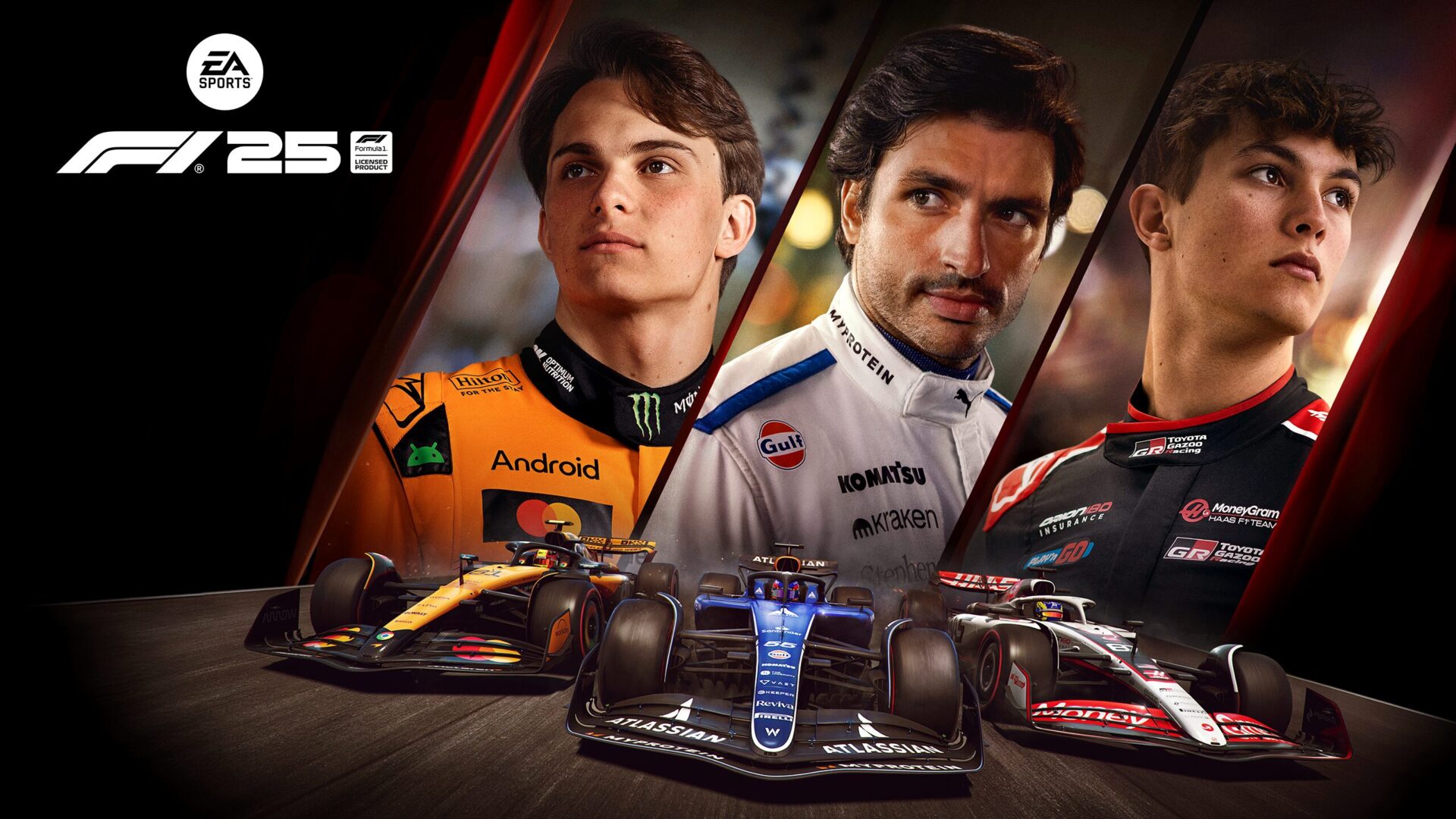Developed By: Codemasters
Published By: Electronic Arts
Platforms: PlayStation 5
Reviewed On: PlayStation 5
Review Code Provided By: Electronic Arts
It’s hard not to come into F1 25 with expectations. As someone who has followed Codemasters’ F1 franchise since its early days, each new instalment has always held the promise of something better—refined handling, improved AI, or at the very least, a sense of continuity that justifies the yearly price tag. Unfortunately, F1 25 on the PS5 feels like a game unsure of what it wants to be. It makes some notable improvements, yes, but also reintroduces old issues and leaves too many features underdeveloped. The end result is a game that doesn’t quite feel like a true next step for the franchise.
Handling and Driving Model: Slightly Sharper, But Not Transformative
Codemasters has made a big deal about changes to the handling and physics model this year, and to their credit, there is a more responsive feel to the cars—especially when playing with assists off. The way the car moves under braking, the subtle feedback through the DualSense controller, and the need to properly manage throttle inputs do make for a slightly more grounded driving experience. On a dry track, with a clean lap, F1 25 can feel immersive and satisfying.

But this isn’t a dramatic overhaul. The difference between F1 24 and 25 is there, but it’s more incremental than substantial. You still get moments where the car feels floaty, particularly during wet races where grip levels behave inconsistently. Some of the deeper sim elements promised in previews don’t quite show up in practice. Tyre degradation, while visually indicated, doesn’t always translate into a meaningful change in handling. Wet conditions still swing wildly between passable and completely unmanageable. It’s improved, yes—but for players looking for a deeper or more consistent sim experience, it’s not the leap forward it’s made out to be.
AI: More Aggressive, Not Always Smarter
The AI has been tweaked to appear more aggressive and prone to error, and on paper, this adds a layer of unpredictability to races. You’ll see occasional lockups, spins, and misjudged overtakes—something long requested by fans. But the issue is execution. These “mistakes” often feel scripted or exaggerated, as if the game is trying too hard to simulate chaos. More importantly, the AI doesn’t always respond logically to changing race conditions. In mixed-weather races, they sometimes stay out far too long or pit prematurely, making strategy feel artificial rather than dynamic.
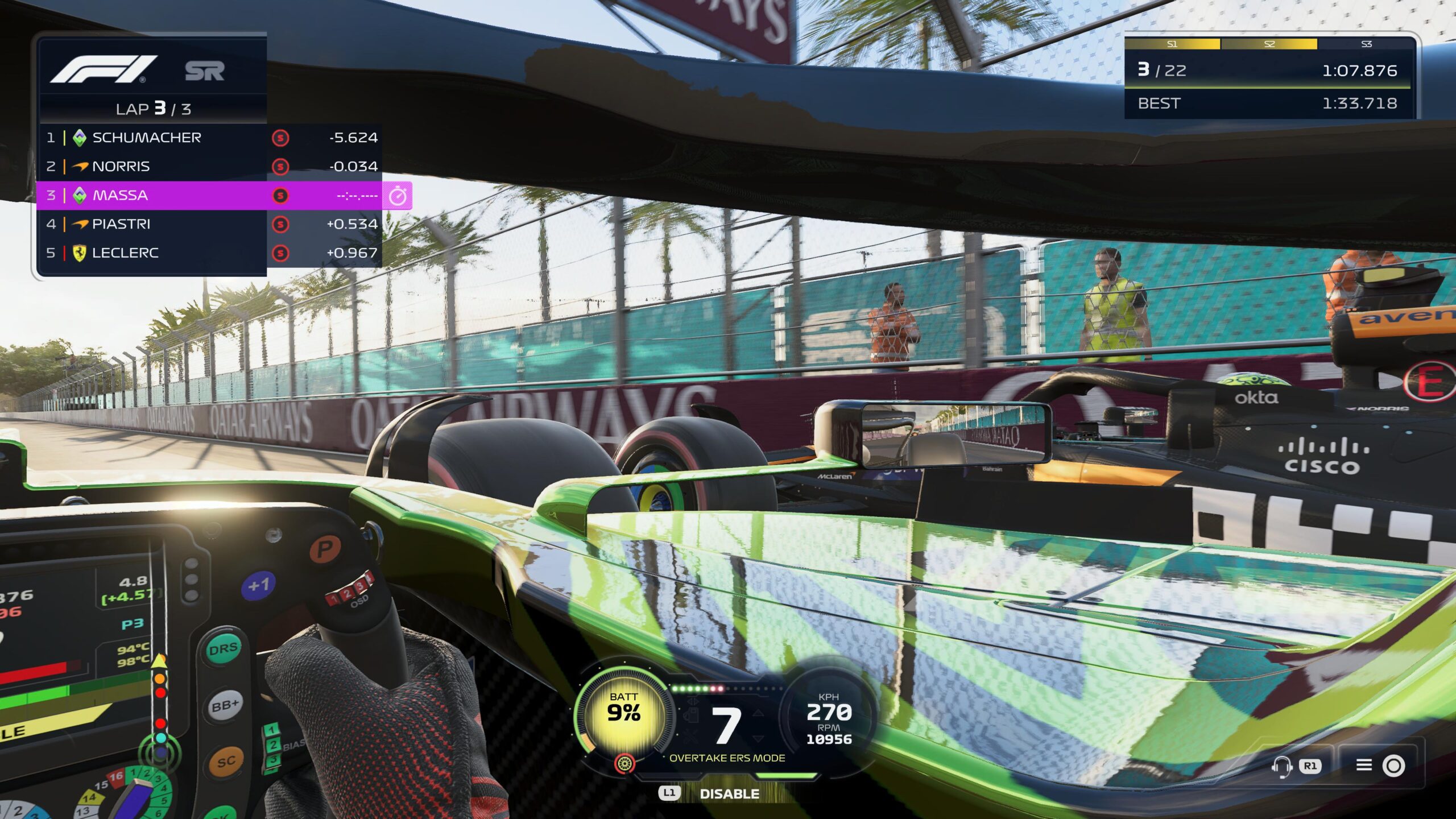
There are moments where the AI puts up a good fight. At times, defending your position feels intense, especially on higher difficulties. But these moments are inconsistent. You’ll just as often breeze past opponents on straights or find yourself the victim of clumsy divebombs that ruin your race. AI awareness in traffic is still spotty, and their lack of spatial consideration can make close racing frustrating instead of fun.
My Team 2.0: A Surface-Level Expansion That Struggles to Justify Itself
My Team has been one of the franchise’s most successful additions in recent years, so it’s no surprise that Codemasters chose to brand this year’s update as “2.0.” Unfortunately, most of the changes feel either cosmetic or needlessly convoluted. You can now recruit two drivers instead of just one, but this barely adds any real strategic weight. Take driver stats, for example. I had Schumacher in my team, rated 94 overall—on paper, one of the best. But despite my car’s R&D being only slightly behind the top team, Schumacher consistently struggled against rival drivers with significantly lower ratings. In one case, an AI driver rated 75 was consistently outperforming him, solely because he was in a better car.
The game seems to ignore driver ability entirely and focuses almost exclusively on car performance when calculating race outcomes. As a result, the grid tends to reflect car stats with almost robotic consistency—you’ll regularly see someone like Yuki Tsunoda finishing P5 or higher just because he’s behind the wheel of a Red Bull.
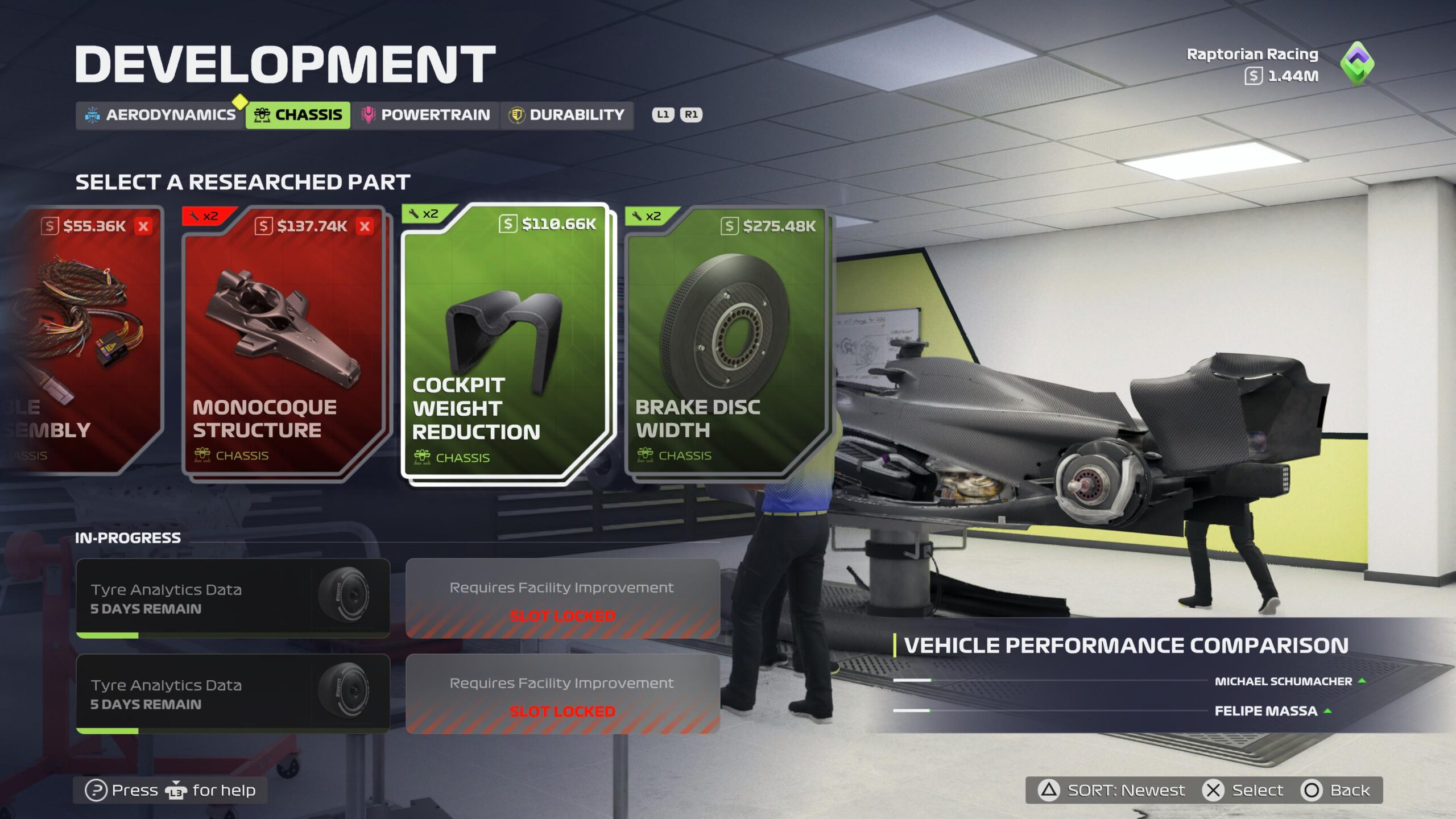
Even as team principal, there’s no real power to influence race strategy in meaningful ways. You can’t plan a race approach with both drivers, issue mid-race instructions, or even enforce team orders. These would be natural additions for a “2.0” upgrade, but they’re missing entirely.
The new “recognition” system, which is meant to reflect a driver’s career growth and status, mostly boils down to another layer of repetitive grind. Driver morale and team chemistry are supposed to impact performance and development speed, but their effects are so minor that they’re easy to overlook entirely. After a few seasons, you start to feel like you’re just going through the motions—gathering resource points, upgrading the same facilities, investing in the same R&D trees. Despite the new terminology and interface tweaks, the underlying loop hasn’t evolved much and is beginning to feel stagnant.
The user experience doesn’t help either. Many simple actions require far too many clicks. Want to apply a sponsor decal? You’ll need to navigate through Corporate > Customisation > Race Gear > Decal—every single time. It’s a small frustration, but one that adds up over a full season.
That said, for all its shortcomings, My Team still manages to offer a reasonably compelling blend of racing and management. There’s a strong foundation here, and for players who enjoy the fantasy of building an F1 team from scratch, it remains one of the better modes in the game. But make no mistake: it’s overdue for more than just a new coat of paint. Codemasters might call it “2.0,” but it feels more like version 1.3 with a slightly updated interface
Braking Point 3: Still Not There
Codemasters’ attempt at narrative-driven racing continues in Braking Point 3, but even three iterations in, it still struggles to find its footing. The characters return—Aiden Jackson, Devon Butler, and others—and while the production value is solid, the writing remains heavy-handed and often cringeworthy. The drama feels forced, and while the scenarios are meant to ease newer players into the game’s mechanics, the scripted nature of the races removes any real sense of challenge or ownership.
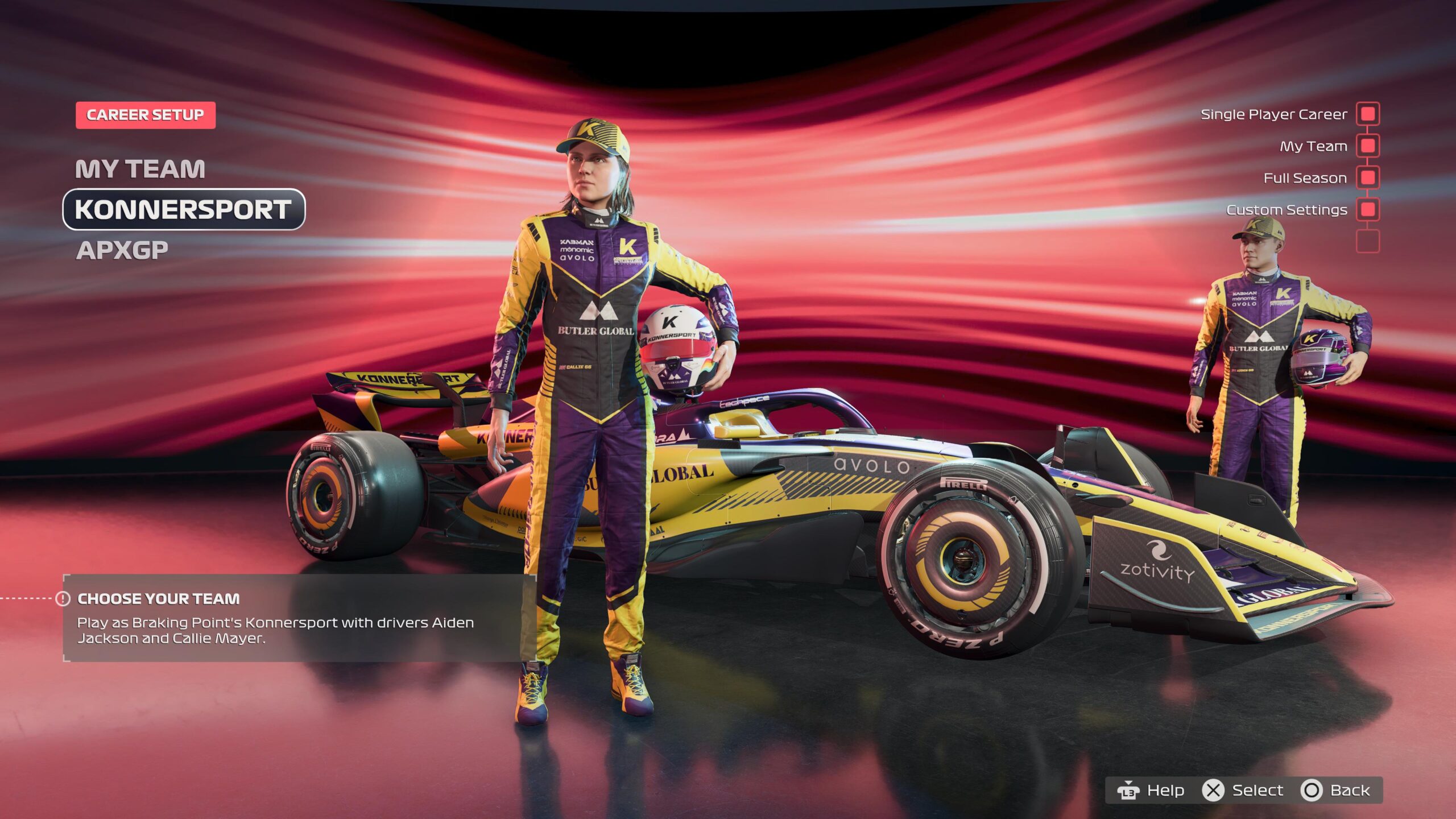
This mode would benefit from more player agency and less reliance on scripted cutscenes that are only loosely tied to gameplay. It’s not terrible—but if you’ve played the previous Braking Points, you’ve seen most of what this one has to offer. For returning players, it likely won’t hold attention for long.
Visuals and Performance on PS5
Visually, F1 25 looks good on the PS5—but it’s the difference is too small when compared to the older F1 titles from the past two years. The updated LIDAR-scanned tracks like Suzuka and Imola show more environmental detail, and the lighting model does benefit from subtle path-tracing tweaks. But unless you’re looking closely, the improvements from F1 23 or 24 are relatively minor.
The PS5’s DualSense implementation is a highlight. The adaptive triggers give weight to throttle and brake inputs, and haptic feedback helps convey tyre grip and surface changes. But even this feature feels underutilized at times—especially when compared to how well other PS5 racers like Gran Turismo 7 use the controller.
Loading times are thankfully minimal, and the game runs smoothly in both Quality and Performance modes. But overall, the presentation feels a bit safe. For a 2025 release on current-gen hardware, F1 25 could—and probably should—look sharper and feel more alive.
Reverse Tracks and Side Modes
One of the few genuinely new features in F1 25 is the introduction of reverse layouts for certain circuits. Silverstone, Zandvoort, and the Red Bull Ring can now be raced in reverse, which is great and fun, and I hope to see more tracks getting their “reverse” treatment.
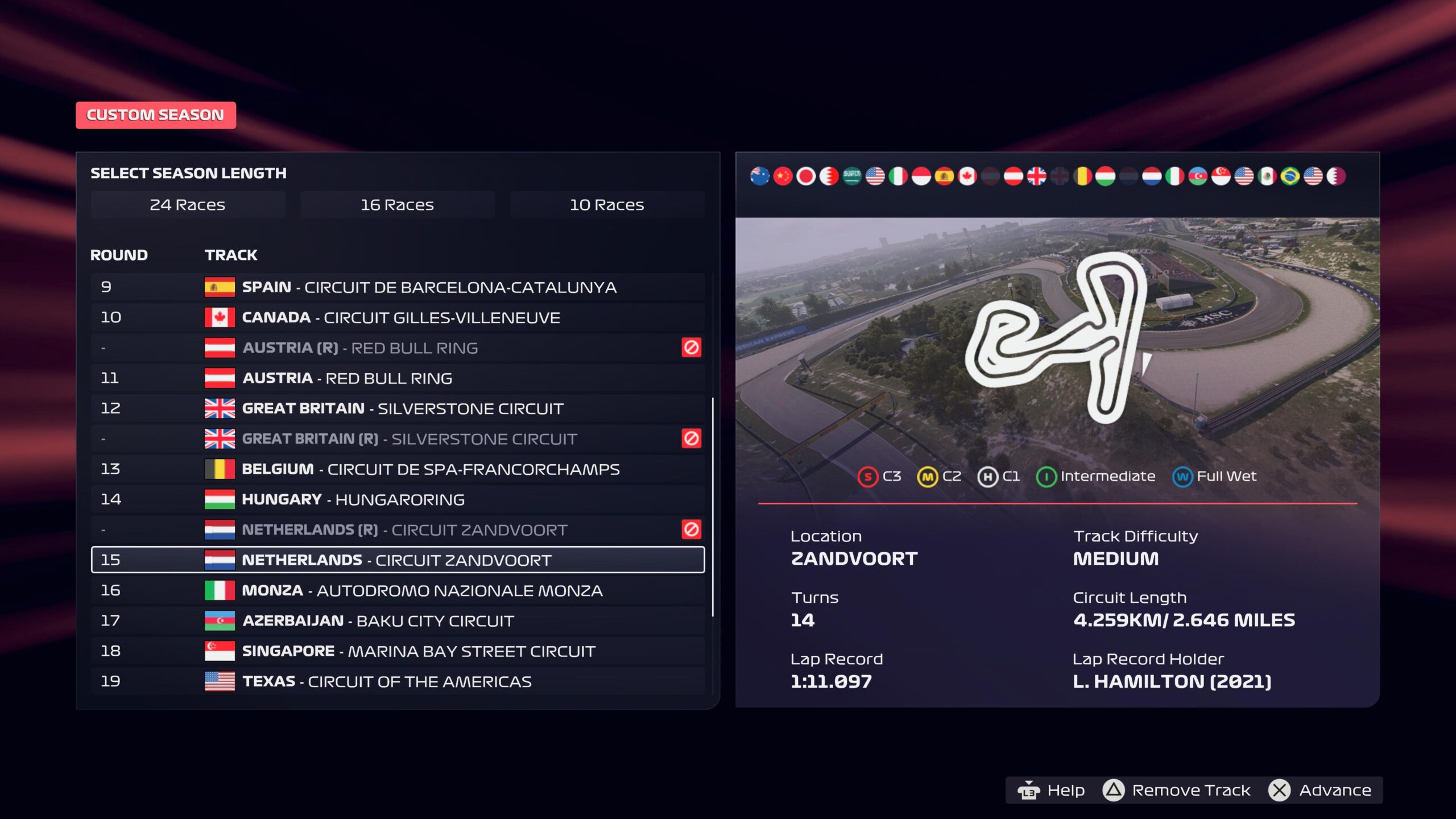
F1 World and Challenge Career return, mostly unchanged. These modes provide some short-term entertainment and allow players to engage with weekly challenges or daily races, but they feel like side dishes rather than core content. Like so much of F1 25, they feel carried over, barely adjusted, from the last few games.
Content Gaps and Missed Opportunities
What’s especially disappointing is the lack of classic content. Long-time fans have been asking for the return of historic F1 cars and old circuits, but they’re completely absent here. The grid is limited to the 2025 season, and while the APXGP tie-in from the upcoming F1 film is a fun curiosity, it doesn’t add much.
The game also lacks meaningful customization options outside of basic liveries and cosmetics. League racing tools and esports features are underdeveloped, and despite talk of building a more connected F1 ecosystem, this feels like another yearly update more than a fully-realised evolution.
All-in-all
What I like about the F1 25 game this year
-
Improved Handling (Slightly): The driving model feels more responsive, especially with assists off. Braking, throttle management, and dry-weather cornering are noticeably better than in previous titles.
-
Solid DualSense Implementation: Adaptive triggers and haptic feedback enhance immersion, giving a tactile edge to braking and tyre grip sensations.
-
Reverse Tracks Add Variety: The addition of reverse layouts for select circuits like Silverstone and Zandvoort is a welcome touch and genuinely fun.
-
My Team Still Has a Strong Core: Despite its limitations, My Team remains a good blend of management and racing for those who enjoy building a team from scratch.
-
Visually Polished (in parts): LIDAR-scanned tracks and subtle lighting tweaks improve environmental detail—though not drastically.
What I wish was better;
-
Minimal Innovation Overall: Many features feel carried over from F1 23/24 with slight tweaks. There’s not enough here to justify the “next-gen” label.
-
AI Feels Inconsistent: While more aggressive, the AI frequently behaves illogically, particularly during weather transitions or overtaking situations.
-
Driver Stats Largely Ignored: In My Team, driver ratings have little to no impact on performance. Race results are overly dictated by car stats, leading to unrealistic outcomes.
-
No Real Team Control: As team principal, you can’t issue mid-race orders, coordinate strategy, or influence driver behavior in any meaningful way.
-
Recognition System Adds Grind, Not Depth: The new career progression system doesn’t meaningfully affect gameplay and quickly becomes repetitive.
-
Cumbersome Menu Navigation: Simple actions—like adding sponsor decals—require navigating through multiple nested menus, which adds unnecessary friction.
-
Braking Point 3 Still Weak: The story mode feels scripted, overly dramatic, and lacking in genuine player agency. Most returning players will lose interest quickly.
-
No Classic Content or Historic Cars: Long-requested legacy content is still missing. The grid is limited to 2025, and there’s no sign of fan-favorite older tracks or cars.
Final Verdict
F1 25 on PS5 is a competent, functional, and sometimes enjoyable racing sim—but it’s not an exciting one. The small improvements in handling and AI are welcome, but they don’t do enough to justify a full-price release for returning players. Braking Point remains forgettable, My Team feels stagnant, and the reverse track gimmick isn’t the content refresh the series needs.
If you’re new to the franchise, F1 25 will probably impress you. But for veterans who’ve spent years with these games, this entry feels like it’s spinning its wheels. It’s not bad—it’s just not ambitious. And in a genre that already demands attention to detail and long-term engagement, that’s not good enough.
